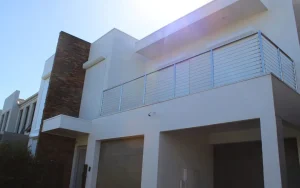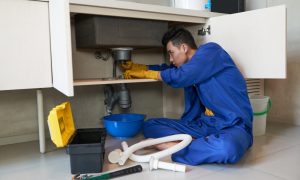Keep Your Home a Safe Haven with These Childproofing Tips

As parents, our top priority is to keep our children safe – that’s why childproofing your home is so important. However, it can be difficult to know where to start when it comes to making sure your home is a secure and safe haven for your little ones. We’ve compiled a list of tips for you so that your home can be as safe as possible. Let’s get started!
Install baby gates at the top and bottom of stairways
Baby gates are an essential part of any childproofing plan. They prevent young children from accessing areas of the house they shouldn’t be in, such as stairways. Be sure to use gates that meet current safety standards and use pressure-mounted models wherever possible – this will make them easier to install and remove when needed.
Anchor furniture and televisions
Children have a tendency to climb on furniture, which can cause it to tip over if not properly secured. Make sure any furniture pieces or heavy items (like dressers or TVs) that could potentially fall over are securely anchored against the wall or floor using appropriate hardware and mounting systems designed for this very purpose.
Cover electrical outlets
Children are curious by nature, so it’s important to cover any exposed electrical outlets in your home with plastic outlet covers or sliding outlet covers that fit snugly into each outlet and prevent children from inserting objects into them.
Get a pool fence inspection
If you have a pool in your backyard, then pool fence inspections in Mornington Peninsula are essential for safety reasons. A pool fence should enclose the entire perimeter with no more than four inches between vertical slats. All gates should also have self-closing hinges, and the latch should be at least 54 inches above ground level; not to mention all trees or shrubs around the pool should be trimmed back three feet from the fence line.
Bathroom safety
Install non-slip bathmats, keep all medicines out of reach, install toilet locks, and cover sharp corners with rubber bumpers or foam protectors.
Kitchen safety
Place safety locks on drawers and cabinets containing knives or other sharp objects, as well as dishwasher and oven doors. Move breakable items like glassware higher up to prevent them from being knocked down.
Living room safety
Cover up sharp edges on furniture with corner guards or edge pads, remove tripping hazards like electrical cords from the floor area, use baby gates at stairways if needed, and lock windows that open more than four inches high (or use window guards).
These tips are just some of the many ways you can ensure your home is safe for young children – there are many other steps you can take too!
Remember, childproofing isn’t just about preventing accidents – it’s also about peace of mind knowing that you’ve taken every precaution necessary to protect your family from harm. With these tips in mind, you’ll have one less thing to worry about so you can enjoy time together without stress or worry!







